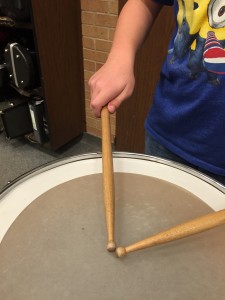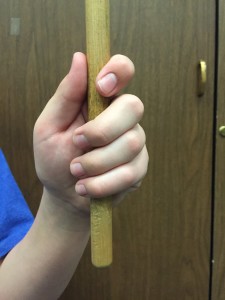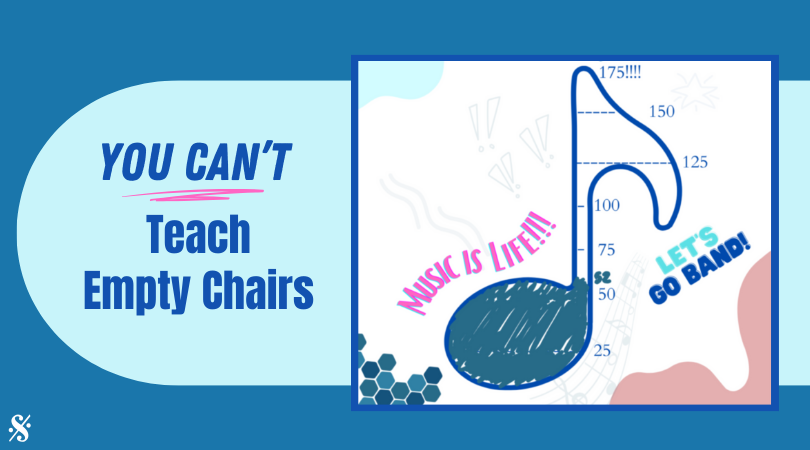The percussionist’s grip on sticks or mallets is as fundamental as the embouchure a wind player forms. The younger the student, the more frequently you have to check the quality of the embouchure. And the younger the percussionist, the more frequently you need to check the grip.

Often directors think they have to get off the podium and go all the way back to the percussion section to be able to see whether the percussionists appear to be holding their sticks correctly. But, I have found that there are three quick things that you can look for to see if your percussionists are holding their sticks correctly:
1. Thumbs. Are the student’s thumbs resting flat along the stick? If the thumb is drooping off the stick or not in solid contact with the mallets, they probably need to make adjustments to their grip.
2. Flat hands. When students have their hands in a resting position, the top of their hands should be relatively flat and parallel to the ground. Unless they are working on French grip for timpani, this should be a fairly universal set up.
3. Pinky fingers. This one is a little harder to see from the podium, so you may find yourself asking your students to raise their hands up so you can see the underside of their grip. The fingers should be wrapped around the stick forming what is often called a “soft fist.” Students will often let their fingers drop off of the stick resulting in their being little to no contact. The quick way to check this is to ask students to inventory where their pinky finger is. It is almost impossible to have the fingers properly wrapped around the stick if the pinky finger is not in place.
Once students know that you will be looking for these grip checkpoints, they should start to more consistently form a higher quality grip.
Eric Rath is an active educator, clinician, adjudicator, arranger, and composer. Mr. Rath has served as a band and orchestra director as well as a percussion specialist at the middle and high school levels. He and Ralph Hicks are the co-authors of the percussion ensemble collection, “Beyond Basic Percussion” and the snare drum and keyboard fundamentals book, “Five Minute Drill” (Tapspace Publications). Recently, they launched their latest book, “The Golden Age of Ragtime,” which features five ragtime piano pieces transcribed for xylophone soloist and marimba ensemble or piano accompaniment. ericrathmusic.
Related Reading:
Band Seating Chart (Free Template)
Selecting Band Music for Contest (Specific Qualifications)
How Using Lanyards Can Help You Listen to Every Student in Beginning Band
If you would like to receive our weekly newsletter, sign up here.
Don’t forget to like us on Facebook too!
Learn. Share. Inspire.
BandDirectorsTalkShop.com









[…] Reading: 3 Quick Ways to Check Your Percussionist’s Grip from the Podium Free Metronome & Sheet Music (including solos) Note Starts “Try This Quick […]